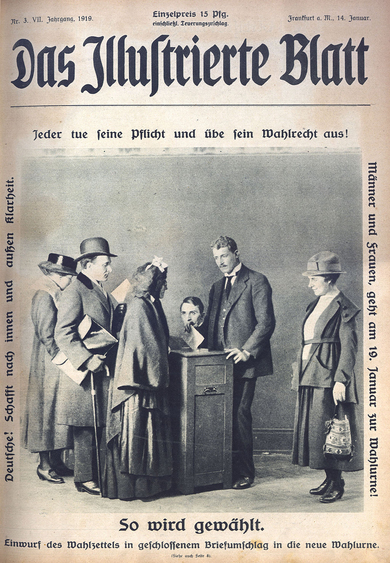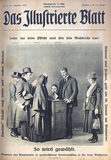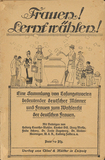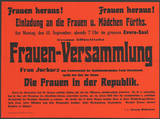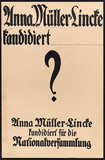Women's suffrage
Women's suffrage
I would like to state here ... that we German women are not beholden to this government in the traditional sense. What this government has done was only right and proper: it has given women what had been wrongly denied them.
Marie Juchacz in her address to the Constitutional National Assembly on 19 February 1919
All citizens over 20 years of age had the right to vote and stand as a candidate in the German National Assembly election on 19 January 1919. This fulfilled the old demand of one section of the German women's movement.
When the date was set for the election, there were only eight weeks left for the preparations. All the parties, including those whose representatives had rejected women's voting rights, now tried to curry favour with the new voters. Election campaigning aimed especially at women was intended to appeal to voters who were still undecided and prevent "large numbers of women from not exercising their vote due to uncertainty" (according to Marie Baum, later deputy of the DDP).
This fear prove unfounded: over 80% of female voters made use of their vote, significantly more than in the following elections.
36 female parliamentarians joined the constitutional National Assembly. Five others followed during the course of the legislative period. Those elected included well-known names in the German women's movement such as Getrud Bäumer of the DDP, Luise Zietz of the USPD or Marie Juchacz, SPD board member and the first female speaker to address a German parliament.
Further information:
Jana Leichsenring /Wilhelm Weege: Einführung des Frauenwahlrechts am 12. November 1918, in: Deutscher Bundestag, 29.06.2017
Julia Paulus: 19. Januar 1919 – Erstmaliges aktives und passives Wahlrecht für Frauen in Deutschland, in: Internet-Portal „Westfälische Geschichte“, 29.06.2017

